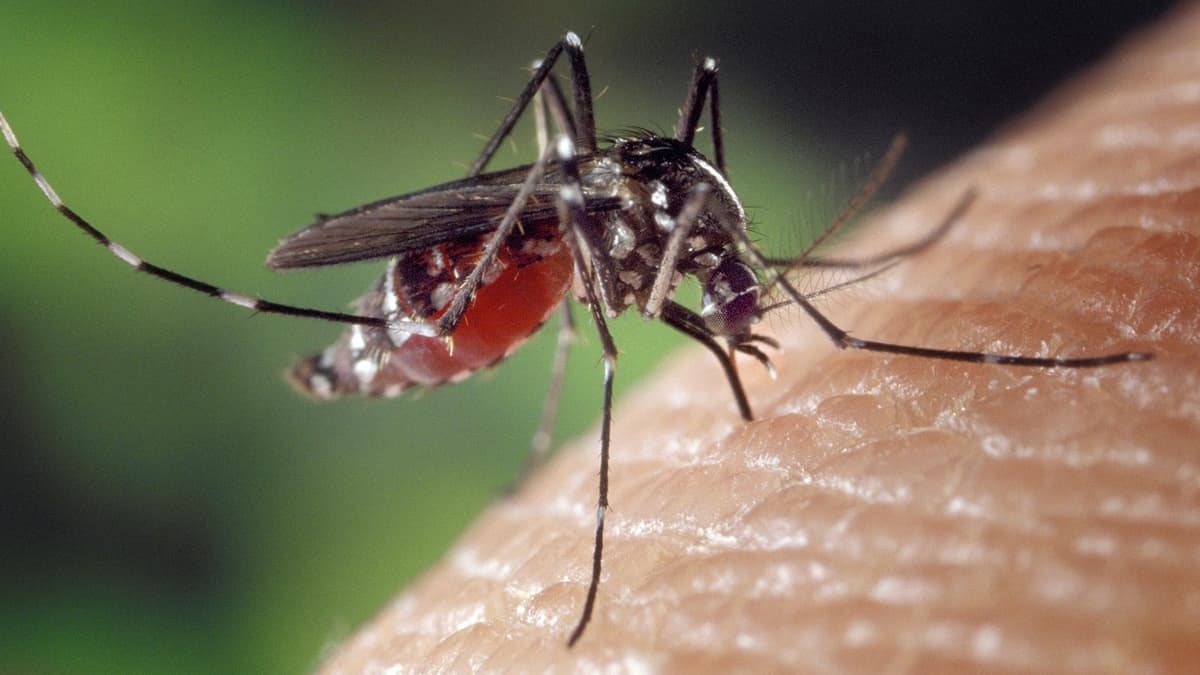Massachusetts Mosquito Virus or EEE Virus: What Is Eastern Equine Encephalitis or Triple E? Causes, Symptoms, Diagnosis and Treatment, What To Know About the Deadly Mosquito-Borne Virus Concerning US Towns
Eastern Equine Encephalitis (EEE) is a viral disease transmitted to humans through the bite of an infected mosquito. Although cases of EEE are uncommon, the virus poses a significant risk due to its high fatality rate and the serious neurological complications it can cause in survivors. In this article, we'll provide you a detail about the EEE.

Eastern Equine Encephalitis (EEE) is a rare but severe viral disease transmitted to humans through the bite of an infected mosquito. The recent detection of the virus in mosquitoes in Massachusetts has raised public concern, highlighting the need for awareness about this potentially deadly disease. The ongoing surveillance and mosquito testing are critical to identifying high-risk areas and informing the public of potential threats. Although cases of EEE, also known as Massachusetts Mosquito Virus are uncommon, the virus poses a significant risk due to its high fatality rate and the serious neurological complications it can cause in survivors. At LatestLY, we have collated a detail about the disease that you must be aware of.
What Is Eastern Equine Encephalitis?
Eastern Equine Encephalitis (EEE) is a viral disease transmitted to humans through the bite of an infected mosquito. EEE got its name because researchers first discovered the virus in horses (equines) in the 1830s. The name ‘Eastern’ reflects the geographical regions where the disease is most commonly found, primarily in the eastern United States, particularly in swampy areas, around freshwater bodies, and near coasts that provide ideal breeding grounds for mosquitoes.
EEE is considered one of the most dangerous mosquito-borne diseases due to its high mortality rate. Although human cases are rare, the severity of the illness and the potential for long-term neurological complications make it a significant public health concern.
Eastern Equine Encephalitis Causes and Transmission
The EEE virus is transmitted to humans primarily through the bite of infected mosquitoes. The virus cannot be transmitted directly from person to person, nor can it be spread through casual contact. The risk of transmission is highest during the late summer and early fall when mosquito activity peaks.
Eastern Equine Encephalitis Symptoms
The symptoms of EEE can vary widely, ranging from mild to severe. In some cases, individuals infected with the virus may be asymptomatic. However, when symptoms do appear, they typically begin 4 to 10 days after being bitten by an infected mosquito. The initial symptoms can include:
- Sudden onset of fever
- Chills
- Headache
- Nausea and vomiting
- Muscle and joint pain
As the disease progresses, it can lead to more severe neurological symptoms, including:
- Disorientation and confusion
- Seizures
- Coma
- Inflammation of the brain (encephalitis)
In severe cases, EEE can result in permanent brain damage or death. The mortality rate for those who develop encephalitis is approximately 30%, making it one of the deadliest mosquito-borne diseases in the United States.
Eastern Equine Encephalitis Treatment
There is currently no specific antiviral treatment for Eastern Equine Encephalitis. Management of the disease focuses on supportive care, which may include:
- Hospitalisation to monitor and manage severe symptoms
- Intravenous fluids to maintain hydration
- Medications to reduce fever and manage pain
- Respiratory support in cases of severe respiratory distress
- Anti-seizure medications for those experiencing seizures
Due to the lack of a targeted treatment, early detection and supportive care are crucial in managing the disease and improving outcomes.
Eastern Equine Encephalitis Prevention
Preventing mosquito bites is the most effective way to reduce the risk of contracting EEE. Public health officials recommend several measures to protect against mosquito exposure:
Use insect repellent: Use products that are effective in repelling mosquitoes.
Wear protective clothing: Long sleeves, pants, and socks can help minimise skin exposure to mosquitoes.
Avoid peak mosquito activity times: Mosquitoes that carry the EEE virus are most active during dusk and dawn. Limiting outdoor activities during these times can reduce the risk of bites.
Install screens: Ensure that windows and doors are fitted with screens to keep mosquitoes out of homes.
Eliminate standing water: Mosquitoes breed in stagnant water, so regularly emptying containers like flowerpots, birdbaths, and gutters can help reduce mosquito populations.
While Eastern Equine Encephalitis remains a rare disease, its severity cannot be understated. Awareness, preventive actions, and prompt medical attention are vital in protecting communities from this potentially fatal virus. As Massachusetts navigates this outbreak, it is essential for residents to stay informed and vigilant against mosquito bites, particularly during the peak transmission season.
(This article is written for an informative purpose and should not be substituted for medical advice. Kindly consult your doctor before trying any tips.)
(The above story first appeared on LatestLY on Aug 26, 2024 11:12 AM IST. For more news and updates on politics, world, sports, entertainment and lifestyle, log on to our website latestly.com).



